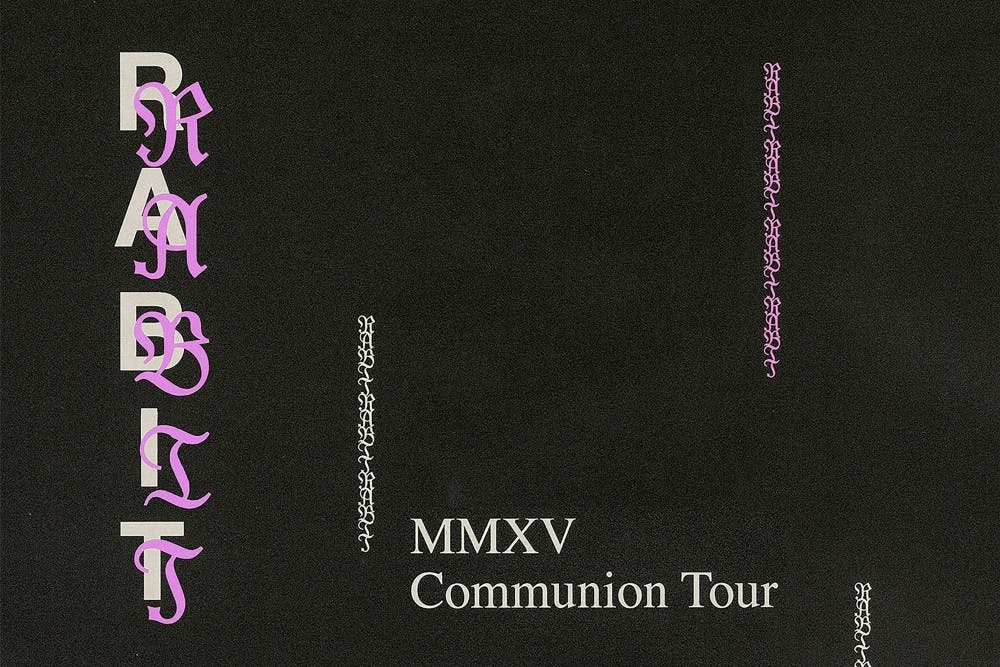Drake’s release of “God’s Plan” and “Diplomatic Immunity” on Jan. 19 had immediate implications for Collin Fletcher, an ASU alumnus and Tempe designer, when his peers quickly took notice of the similarities between a design Fletcher had done for Texas-based electronic artist Rabit in 2015 and the cover art for “Scary Hours," Drake's new EP.
Fletcher, who graduated from the ASU graphic design program in spring 2017 and returned to the program teaching entry-level graphic design courses for the fall 2017 semester, has produced work for a wide range of artists including local underground musicians, Danish pop singer MØ and rapper 6lack.
Pushing beyond what was required of freshmen and sophomores in the graphic design program, Fletcher began doing freelance flyer designs early in his education and began curating them on his Tumblr blog, which was essential in getting more traffic for his work, he said.
Fletcher was at a concert when his friend texted him asking if he had done the cover art for Drake’s new release.
“I replied, ‘I wish I did,’" Fletcher said.
It was not until when Fletcher remembered his friend’s question later that night that it became clear to him what his friend had meant.
“I was so mad,” Fletcher said. “I think that there is this weird emotion where you are not surprised because there has been a lot of close calls, but once it happens to you, it’s not a good feeling.”
While Fletcher said that the occurrence was nothing new in the industry, he said he felt that his situation was unique.
“I don’t think that as far as a release goes I have ever seen something this deliberate,” he said.
Visual communication design instructor and one of Fletcher's former professors, Eric Montgomery, said he agrees.
“When I saw the difference between the two I thought it was obvious that they had blatantly been highly influenced by what Collin did,” Montgomery said. “I can’t really say that in my 30 years I have experienced anything like this, especially at the level that Collin has experienced.”
Evan Billingsley, an instructor at the Hugh Downs School of Human Communication who is writing his dissertation on copyright law, cited the right to prepare derivative works and the concept of substantial similarity as two laws that could potentially protect Drake in a legal case.
“Despite the obvious similarities, we know that (Drake’s cover art) is not literally the same thing. It’s not literally a copy," Bilingsley said. "Drake and his crew changed it in some way, but it’s up to the court of law to decide if the changes are substantial enough to make the work something new on its own.”
However, Billingsley asserted that, historically speaking, the legality in cases like this is not what matters in the long run.
“For things like this, what matters is what we call the court of public opinion," he said.
In this case, the focus is shifted to how the people are responding to press coverage of the accusations rather than speculations of how the court could rule, should it get to that level.
Fletcher feels satisfied with the press coverage after Rabit posted the two designs side-by-side on Instagram, leading to articles by Pitchfork and AZ Central that prompted Drake to respond.
"rabitmusique: today I wake up to see OVO has redone one of my 2015 tour posters designed by @collindfletcher for Drake's new single. Poor Collin is always having his style stolenlol BUT I love being part of a team that's so creative and iconic #drake #ovo #rat #roach #simp - *Rabit - Les Fleurs Du Mail available now*"
According to the article published by AZ Central, Drake's label OVO told culture magazine Paper that "it's common to be presented with a whole pile of work to choose from that is referenced off older art."
“When the news picks it up in the way that they did, people can’t ignore it. Everyone sees that,” Fletcher said. “At least it’s there and it's acknowledged, and that's all that matters.”
But ultimately, he was not impressed with Drake's response.
“You would think (Drake) would care about what his own art looks like and where it comes from. You would think that he has some degree of interest," Fletcher said. “Apparently, he doesn’t.”
Montgomery said that it wouldn’t have been hard to catch something like that either and that originality is one of the biggest principles taught in the ASU graphic design program.
“It always comes back to finding the solution from within the problem and not referencing other designers,” Montgomery said. “Someone clearly hadn’t done their homework."
Fletcher said it feels wrong to have his design representing music as "digestible" as Drake’s since his design was created for an album of more abstract and experimental music.
Now that the initial shock and anger have subsided, Fletcher said he's been questioning the role social media should play in building a creative brand, the diminishing power cover art has with the increasing anonymity of designers and how this occurrence will affect his career.
“I don't know what it is, but there is a lesson to be learned in all of this,” Fletcher said.
Reach the reporter at goldham@asu.edu and follow @graceoldham123 on Twitter.
Like The State Press on Facebook and follow @statepress on Twitter.




